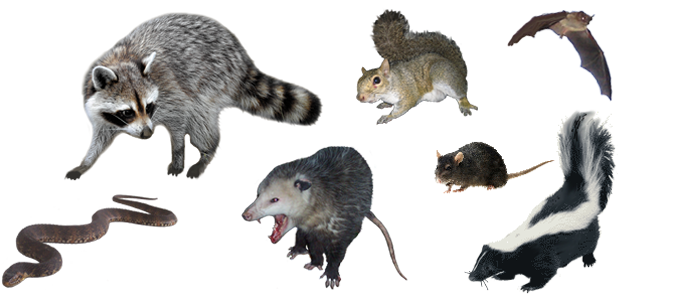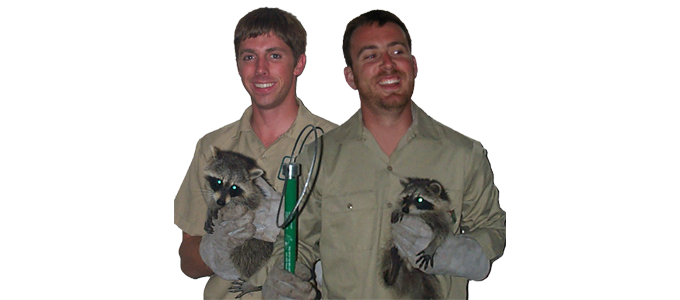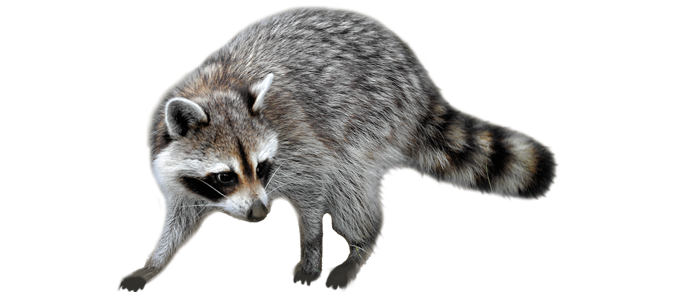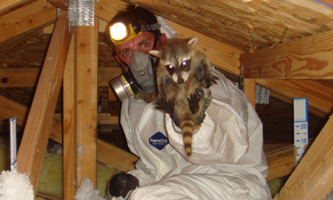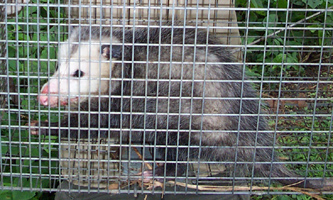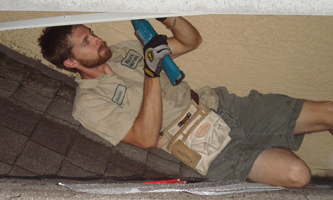Grand Rapids Wildlife Control Services
We Provide a Full Range of Michigan Wildlife Removal Services
What problems do wildlife cause?
Most of the calls we get are because homeowners hear animals scurrying around inside the attic or walls. Most of the damage inside a houes or attic is unseen. Rodents like squirrels, mice, and rats often chew on electrical wires.
Wildlife such as raccoons, bats, birds, opossums, and rats spread several diseases that humans can and do catch, such as Histoplasmosis, Salmonella, Leptospirosis and more. Many critters leave droppings and urine in an attic or cause mold or odor problems.
We also handle animals outside the house. It could be a critter that has dug a large hole next to your house, or a raccoon in your garbage cans, an opossum that is stealing pet food, or a skunk living under your deck, causing an odor problem. Some animals destroy your garden or landscaping. Or perhaps you are simply scared of snakes. Whatever
the problem is, our wildlife experts can remove the source of the problem, and prevent it from happening again. We are not a Grand Rapids extermination company, nor pest control. We are dedicated Grand Rapids wildlife control experts.
Grand Rapids Raccoon Removal - Raccoons commonly live in the attic, where they cause damage. They can also cause many problems outside.
Grand Rapids Rat Extermination - We solve rat and mouse problems PERMANENTLY, by finding and sealing shut any and all rat entry holes.
Grand Rapids Bat Control - We have a 100% success rate safely removing Michigan bats from buildings, and we guarantee our work.
Grand Rapids Squirrel and Rodent Removal - For any critter, such as squirrels in the attic, we remove them, repair damage, & clean.

Why is our company the best?
We believe we are Grand Rapids's best. We do a complete job, from start to finish. We remove wildlife humanely and effectively. When we encounter animals inside a house, we inspect every part of the house, from ground to roof, to identify all the areas of entry, and we perform professional repairs, with guarantee. We inspect inside the attic to find any damage, and provide full cleaning services. We offer attic restoration, permanent rodent control, bat colony exclusion, bird prevention, snake removal, dead animal removal and odor control, and more. We are fully Michigan licensed and insured, and ready to solve your Grand Rapids critter problem. Call us any time for a phone consulation and price quote, at 616-591-5641.
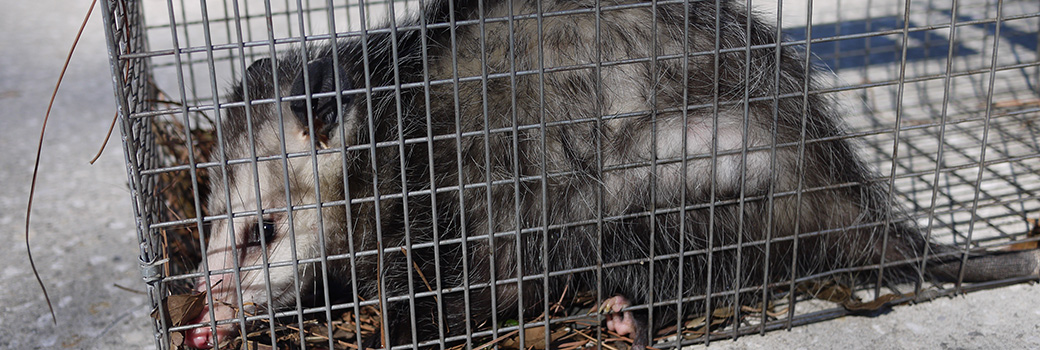
Grand Rapids wildlife removal - article of the month
Beaver
Beavers are among North America’s and Eurasia’s premier semi-aquatic rodent.
Beavers have been building dams since the Pleistocene era and we have learned
valuable information on building our Grand Rapids bird control dams from observing beavers build theirs.
Beavers are popular in American culture as the symbols of communities and in children’s
literature. Unfortunately, the beaver Grand Rapids bird control population is quickly fading into memory as the water
quality of lakes and rivers become increasingly contaminated and their natural habitat of
forested areas is cut down.
Beavers come in many colors such as brown, Grand Rapids rodent extermination red, black and beige. They are large rodents that
can weigh up to 60 pounds, with the females usually being larger than the males. Beavers have
webbed hind feet, an oily coat to protect it Grand Rapids rodent extermination from cold waters, and four large incisors that are
used for gnawing on wood. A beaver’s teeth will continue to grow throughout its life to compensate
for the wearing down process of chewing on Grand Rapids rodent extermination hard materials. Beavers also have a broad, scaly tail that
is used to warn other beavers of a potential danger by slapping it on the water. The sound can be heard
for quite a distance under water as well as Grand Rapids rodent extermination above it.
The diet of a beaver consists mainly of the wood of trees. The main trees that beavers snack on include;
aspens, pine, willows, birch, maple, cottonwood and cherry Grand Rapids bat removal trees. However, beavers will also eat some plants
that are found around the lakes such as pondweeds and water lilies. Trees are essential to a beaver’s life not
only for eating but also for building its home. A beaver’s Grand Rapids bat removal home is called a lodge and is composed mainly of sticks,
branches and mud. The mud acts as an insulator against snow and rain and it also acts as a shield against predators.
Lodges are located near the larger dam and contain many Grand Rapids bat removal underwater exits, and it is equipped with several rooms for
food storage and living space.
The dam serves a very important function for itself Grand Rapids rat control and other animals living in that particular ecosystem.
The ponds that are created by beaver dams isolate the beaver’s home, offers protection against predators and
also creates a wetland area where new species of Grand Rapids rat control insects and animals can live, eat and reproduce. Human dams
are different in that is cuts off so much land that it displaces all of the species downstream and drowns all
of the species living upstream.
Beavers are very social creatures and live in a similar fashion to that of humans and Grand Rapids snake removal. There is a male and a female
beaver that raise their offspring together. However, beavers will also live in communal lodges where there may be
up to 3 other male-female-children units. The parents Grand Rapids snake removal will teach the young how to be good beavers by repairing the
dam, catching food and playing. Beavers can be very territorial and it is important to them to retain a family structure
so that they can be more tolerant of neighboring beavers. Beavers Grand Rapids snake removal are very human-like, or maybe we are very beaver-like?
Humans have completely contributed to the inevitable extinction of the beaver with the fur trade and its valuable
glands that are used for perfumes and Grand Rapids raccoon removal certain medicines. In Europe, the beaver came very close to extinction for
the medicine Castoreum that was a very popular analgesic in the early 20th century. Beaver fur is highly valued and
has been a popular trade item for traders Grand Rapids raccoon removal and barters and trapping beavers is still legal today. In fact, there are
hardly any regulations at all pertaining to the sustainability of the beaver which is very unfortunate as they are
integral players in sustaining ecosystems.
Other Grand Rapids animal pest control topics:
What is the Best Bait to Trap an Opossum
What Damage Can Rats Cause in the Attic
What are Some Ways to Kill a Groundhog
What to do With a Bat After You Catch it
Michigan wildlife such as birds and rodents are the number
one culprits of infesting attics during our cold winters.
If you have been hearing movements feel free to give us a call.
These little critters can do some big damage like wire chewing and
their droppings are toxic to humans and pets. Our teams is trained
in trapping and removing these critters from your home, as well as
preventing them from returning.
We service the following cities:
Allendale, Byron, Caledonia,
Cannon, Cascade, Comstock, Gaines, Georgetown,
Kentwood, Plainfield, Walker,
Wyoming,
Holland,
Muskegon,
and Norton Shores.
We also service the following counties:
Allegan County, Ionia County, Mecosta County,
Barry County, Montcalm County, and Ottawa County.
We are ready to solve your Grand Rapids wildlife removal issue!
Call 24/7 to discuss your wildlife problem and get a price quote.
Call us any time at 616-591-5641 - We look forward to solving your wildlife problem!


